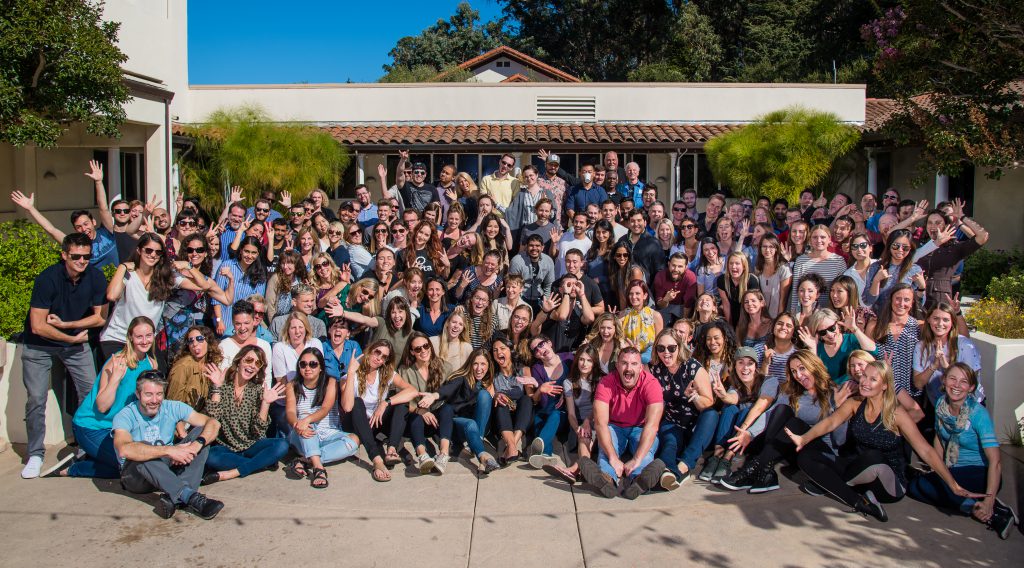In this edition of CULTURED, we had the chance to discuss the learnings and challenges of leading People with Lucia Guillory, VP of People & Places at Virta Health. Lucia’s teams (HR, Recruiting, & Places) set the strategy for and deliver upon Virta’s end-to-end employee experience.
Previously, Lucia led the People Team at Patreon, where she revamped its culture and values, 3xed its size, and worked to acquire and integrate competitors. Earlier in her career, Lucia worked in various capacities across HR. Most notably, she led global employee engagement and has been the Chief of Staff to the Head of HR at Yahoo.
With all that experience, Lucia surely had tons to share about her knowledge of building a healthy company culture for a multi-location workforce, understanding what teams want from their People leaders, and figuring out why company culture matters for every single one of us.
Tell us a bit more about your background. How did you end up working as VP of People & Places?
I started my career studying Organizational Behavior (OB) at the GSB (Stanford’s Graduate School of Business). I studied diversity and inclusion, power dynamics, and organizational design.
My first job was actually in analytics. I think analytics is a useful starting point because the industry doesn’t know how to value our skills beyond the quantitative ones. Data science and analytics work as powerful tools within HR. So, it’s easier for a PhD to go straight into an analytics job than in other parts of the HR world. That’s how I got into this industry.
I worked in Predictive Analytics for Yahoo for some time, and I was in Employee Engagement, which was my foothold to move into other parts of HR. It was an excellent opportunity to see different parts of the industry and work closely with executives.
Yahoo was the best starting point for me because it allowed me to gain diverse HR experience in a large company. I’d recommend that to anyone making the transition from academia to the applied world. After being a business partner for such a large group, it was easier to make the transition to leading an HR function at a smaller company. This experience is what helped me get the job at Patreon, and then at Virta.
As the VP of people, what does your typical day look like?
I manage three different functions: HR, Recruiting, and Places. Speaking of Places, Virta’s offices are widely dispersed geographically. We have an office in San Francisco, Denver, Omaha, and even a small one in Rhode Island, to name a few. Most of my time is spent talking to people I meet with every member of our team within a few months of them joining. I do this to understand what’s important for Virtans across the company and to continue to look at the organization with fresh eyes.
So, some part of every day is meeting new teammates. I also discuss strategy and execution with my team leads and have planning and feedback sessions with other leaders throughout the company. Virta is growing rapidly right now, so I interview prospective teammates with some portion of my time on most days.
How do you handle such a distributed team at Virta?
It’s challenging, and I think that there are a few different elements to get right. The first is just the technical proficiency that the organization requires to communicate across long distances, such as a good video conferencing solution. We also need to implement standards around how people are going to talk and how they solve problems.
We’re enthusiastic Slack and Zoom users. Even people who are in the same office can have lengthy conversations over Slack as opposed to in-person; it’s helpful to see the history of what’s happened. We’ve also become a very documentation-oriented culture so that, even if you haven’t heard about what’s going to happen, you can read the resource and get up to speed asynchronously.
Those are the more technical parts of the job, and then there’s the cultural part. In each location, there are slightly different cultures. There must be a leader in each place who can nurture and support the culture and traditions of the org. As a team, we have to find the right balance between being a unified whole and having our way of doing things in each location.
What are some things you feel you’ve achieved at Virta with your People team, and what are the things you’re still working on for this year?
I’ve only been here for about nine months, and it’s been a whirlwind in terms of the number of changes we’ve made. In this time, we’ve revamped our benefits, and we’ve almost doubled our employee benefits offering.
Sarah Ostrom, our Benefits and Operations Specialist, did a phenomenal job rolling the changes out and supporting each teammate. We’ve also created a leveling structure for the company, and we’re now in the midst of a performance review cycle, and compensation review cycle.
These are processes that are entirely new to Virta. Marc Mooney, our HR Lead, has been instrumental in getting these off the ground and partnering with leadership to make them successful.
On the recruiting side of the house, we’ve been streamlining processes to drive more efficient hiring at scale. Lindsay Schweikert’s (one of our senior recruiters) efforts have dropped the hiring time for some roles to just around a 3rd of what they once were. It’s been great to see the team make so many improvements within their areas of expertise.
Marc is also going to work on leadership development, which is vital for any early-stage company like Virta. Developing leaders is crucial because they’re the ones who will help you to scale. As the company grows, the CEO can no longer be the communicator, the convincer, the beloved person for everyone. The organization as a whole needs to share these responsibilities.
You mentioned earlier you expanded the benefits. What do you think brings more value to the company in terms of benefits?
When it comes to benefits, there’s no “one size fits all” solution; I wouldn’t advise people to chase a trend or fad. I would say to ask people what they want, and then to work with your broker on what sort of packages can make those desires a reality.
One of the things about Virta is that we have several teammates who are having children, so they were very interested in benefits for families. For instance, we have Cleo, which provides different types of courses and coaching for new parents, and that’s something that our team values. However, when I was at Patreon, we didn’t have many new parents, so adding a benefit plan around this area wouldn’t have the same impact here that it has at Virta.
The other thing that I can suggest is that benefits are not something to “use and forget.” Part of why we saved so much money is that, when our team grew, we were eligible to be in a different space for negotiating benefits with brokers.
So, by not reviewing these things every year, you can miss opportunities that are available to you because of your company’s scaling. Switching our broker led to many new benefits, as well as changing health plans.
During your time at Virta, what have been your biggest learnings?
One of my biggest learnings has been about the importance of explaining why you’ve made certain choices or decisions. As people leaders, we’re very focused on delivering whatever it is people are seeking. We provide benefits improvements; we provide a performance system; we’re delivering learning & development, and so on.
In these cases, it’s easy to assume that the why is apparent to everyone, but it’s really not, and so you must explain it.
Communication is vital, and highlighting why you make a particular decision, why you think something is suitable for an organization, and having an open dialog with people about that before you jump into delivery mode is essential. The larger the organization, the more time leaders need to spend communicating why things are happening. At our size, we need to spend more time communicating about changes than we do implementing them. I’ve thought about that more in these past nine months that I have previously, likely because we’ve been making so many changes in such a short period.
Are there any initiatives that failed and surprised you when you saw that they weren’t well-received?
In most cases, when you’re making a decision that’s going to have a significant impact, there’s some degree of polarization that you can anticipate. Generally, when you change something, it upsets some people. I’ve never made a change that everyone loves. I usually have some people that love it and will grow to love it more over time, and then others will be upset by it.
There are things that organizations have to do to be effective, and that is painful in the short term. When the people function creates a leveling structure for teams, we see it as something beneficial. In our view, the message is, “We’re going to create a ladder for you so that you can more easily think through how to progress in your career! Before, you’d have had only your manager’s help to try and figure this out with no guarantees. Now you’ll have a clear and consistent path, isn’t that great?!”
However, employees who feel they should be at a higher level or have different goals than those valued in the new structure might not see leveling as something positive. Their dissatisfaction can detract from the perceived success of the whole initiative if the organization is expecting the change to improve happiness in the short term.
I’ve also had many personal failures that have been informative for me. When I started as a people manager, I had no idea what I was doing, and I had to lead a sizeable team very early on in my career. I quickly learned that you have to be more than smart and hard-working to be a good leader. You have to listen; you have to care genuinely about the people who work for you whether or not they like you, and you have to own up to things when you make a poor decision.
And finally, why is Company Culture important to you?
I’ve spent most of my life with my coworkers; it’s either my coworkers or my husband, but my husband doesn’t even get the prime time because he sees me when I get back from work, and I want to eat dinner and go to bed.
The people that I work with get the breadth and depth of who I am. The majority of my life is happening at this company, and I want it to be great.
No one wants to spend the majority of their lives having experiences that aren’t compelling. I think we’re at the point where everyone is awake to the fact that our real life is happening now: “How do you want it to be? What can you do to make it better?”
We wholeheartedly agree on that last point; work is too big a part of our lives not to enjoy. Thank you very much, Lucia!
—
Thanks for checking out our Expert Series! We publish new interviews regularly with leaders from fast-growing startups, Fortune 500 companies, and everything in-between. To stay in the loop and meet the experts, apply to join our Teams at Work Community here.





